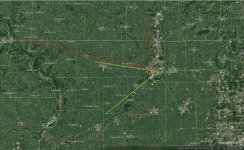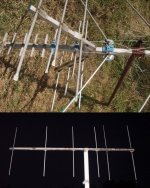FCVPI99
Member
i know scanners and radios are 50 ohm but will it really hurt if i use a 75 ohm? im trying to pick up far away NOAA radio stations so i dont need to transmit i just need something that can suck in signals from 50 to 100 miles away i was looking at a VHF UHF yagi on amazon for 100 but i dont need UHF all i want is VHF .. thinking maybe an old time VHF TV antenna might work im in Rockford and my goals are Dixon Freeport and Dubuque im thinking i could split freeport and Dubuque off of same Antenna as the are the same direction
Green is i get Yellow is i get but need better Antenna and red is i dont have enough radios yet .. lol
how hard is it to make a VHF NOAA use Yagi???? as i dont have the 300 bucks i keep seeing them for
Green is i get Yellow is i get but need better Antenna and red is i dont have enough radios yet .. lol
how hard is it to make a VHF NOAA use Yagi???? as i dont have the 300 bucks i keep seeing them for



